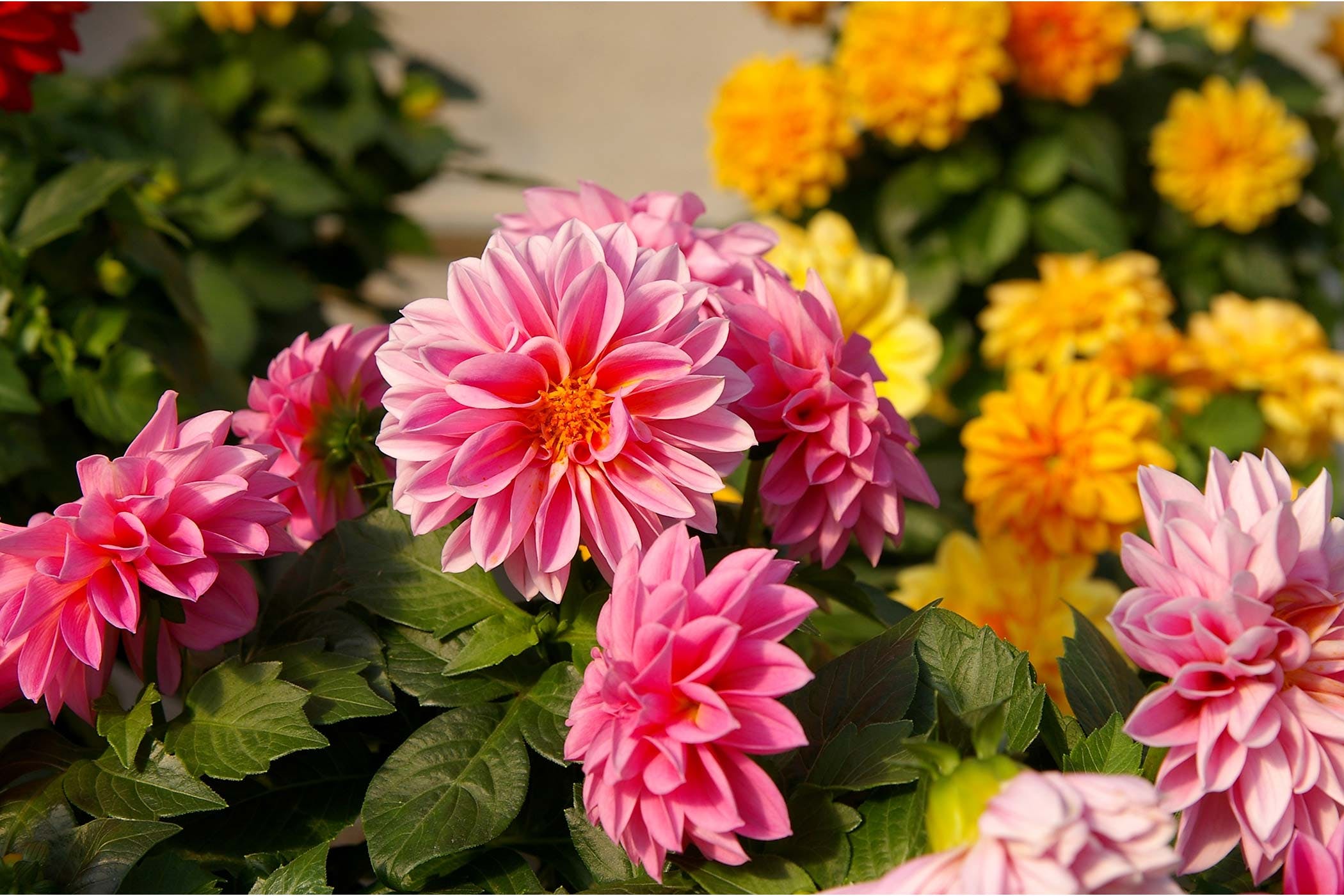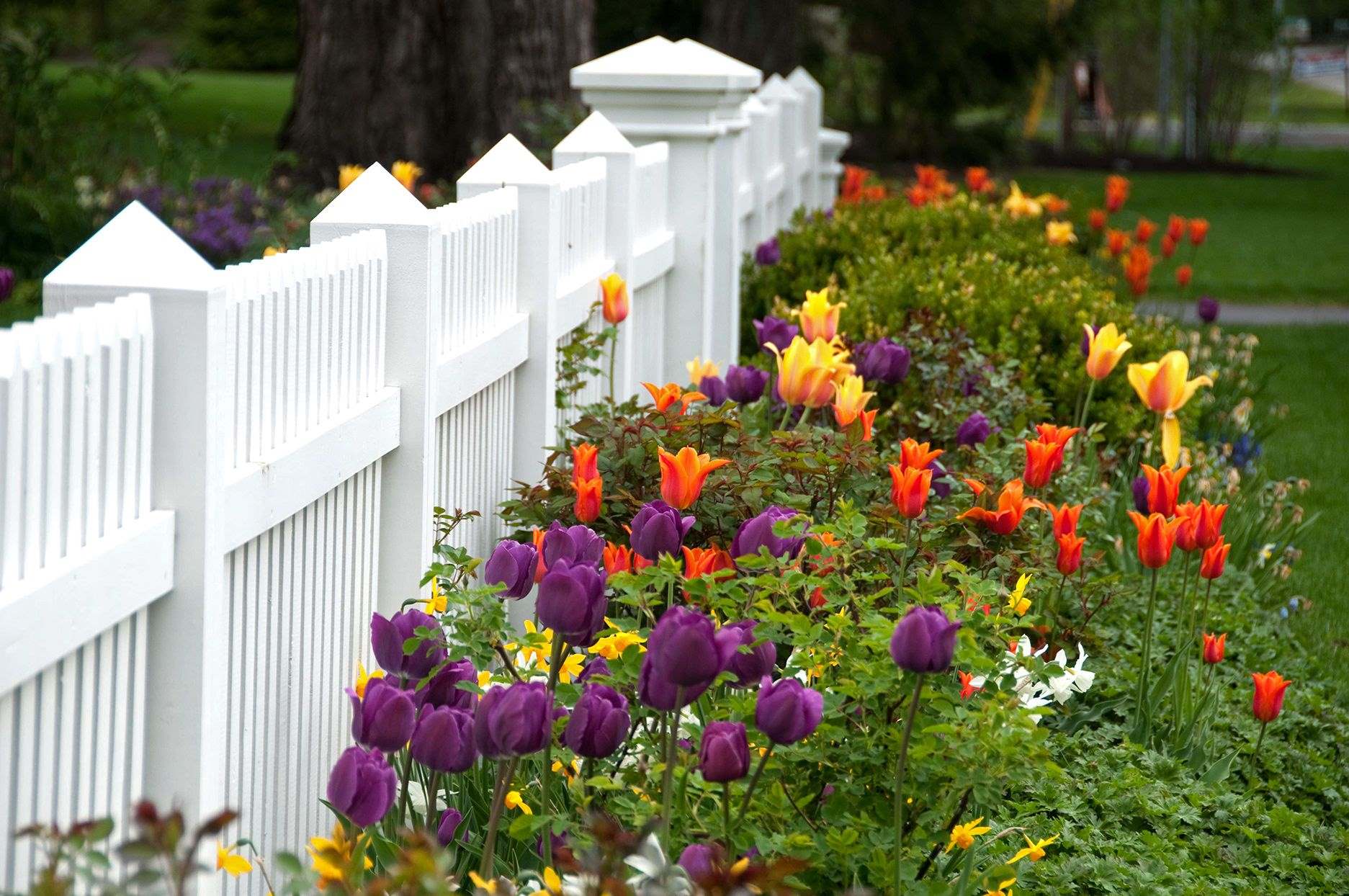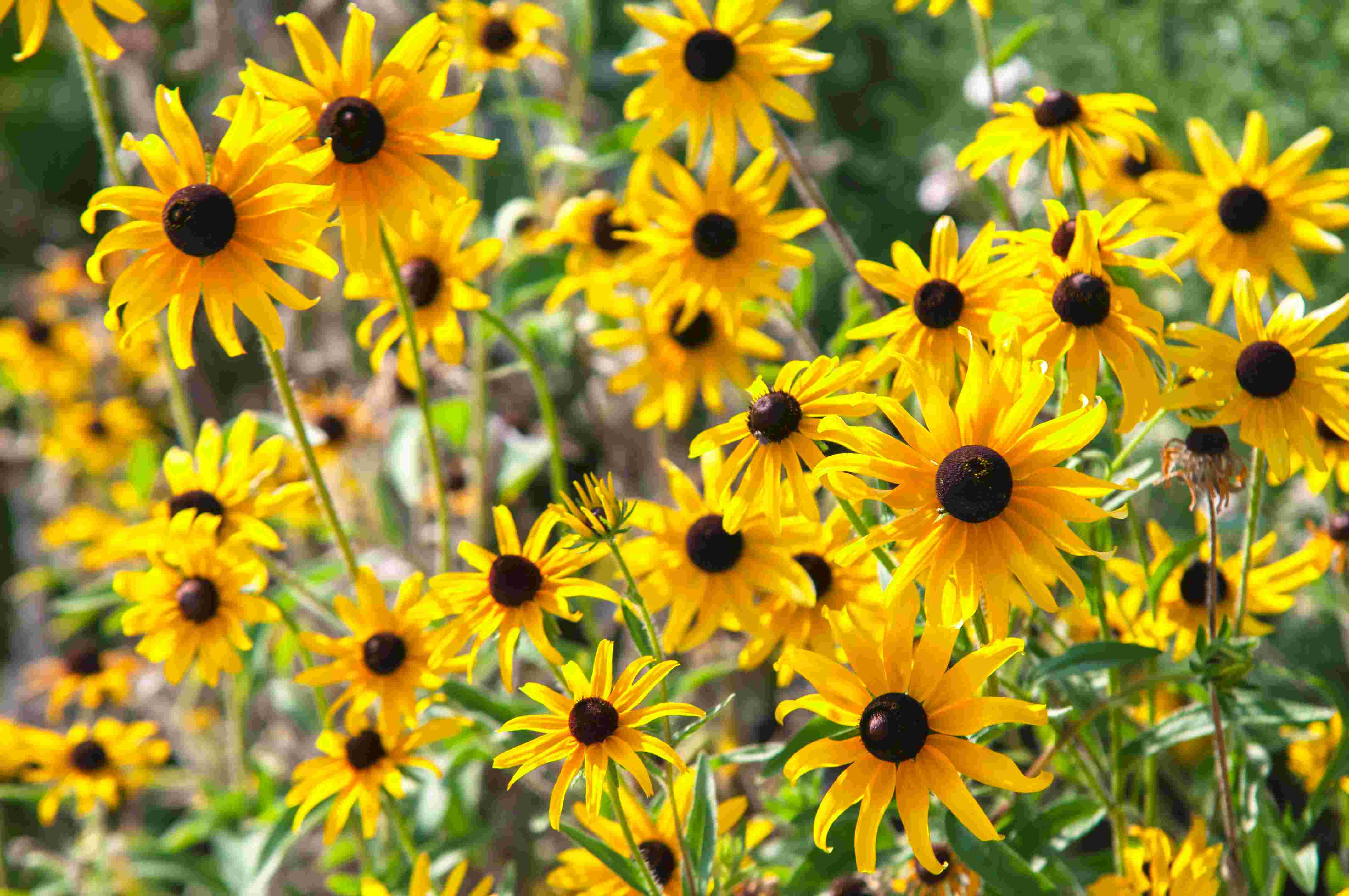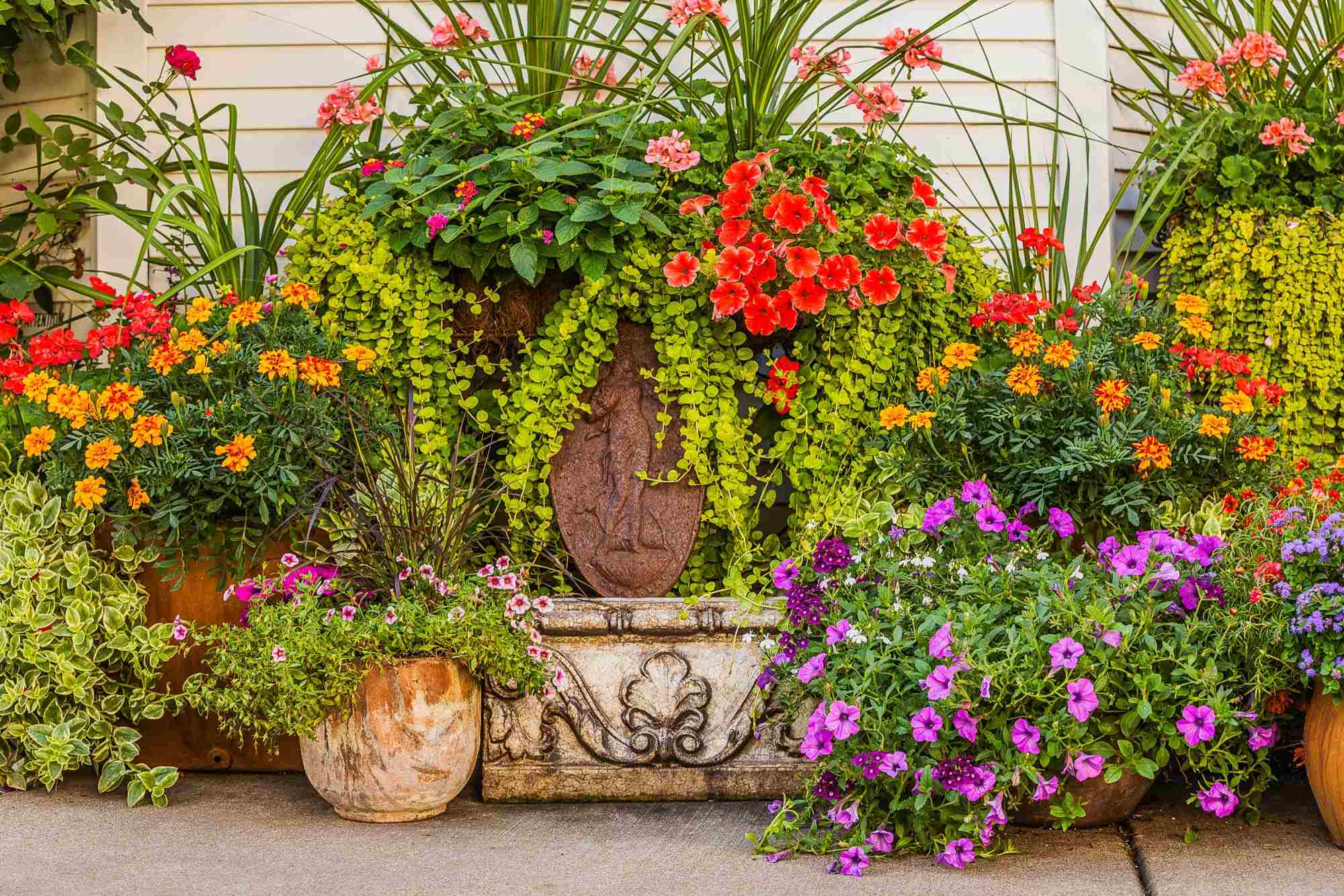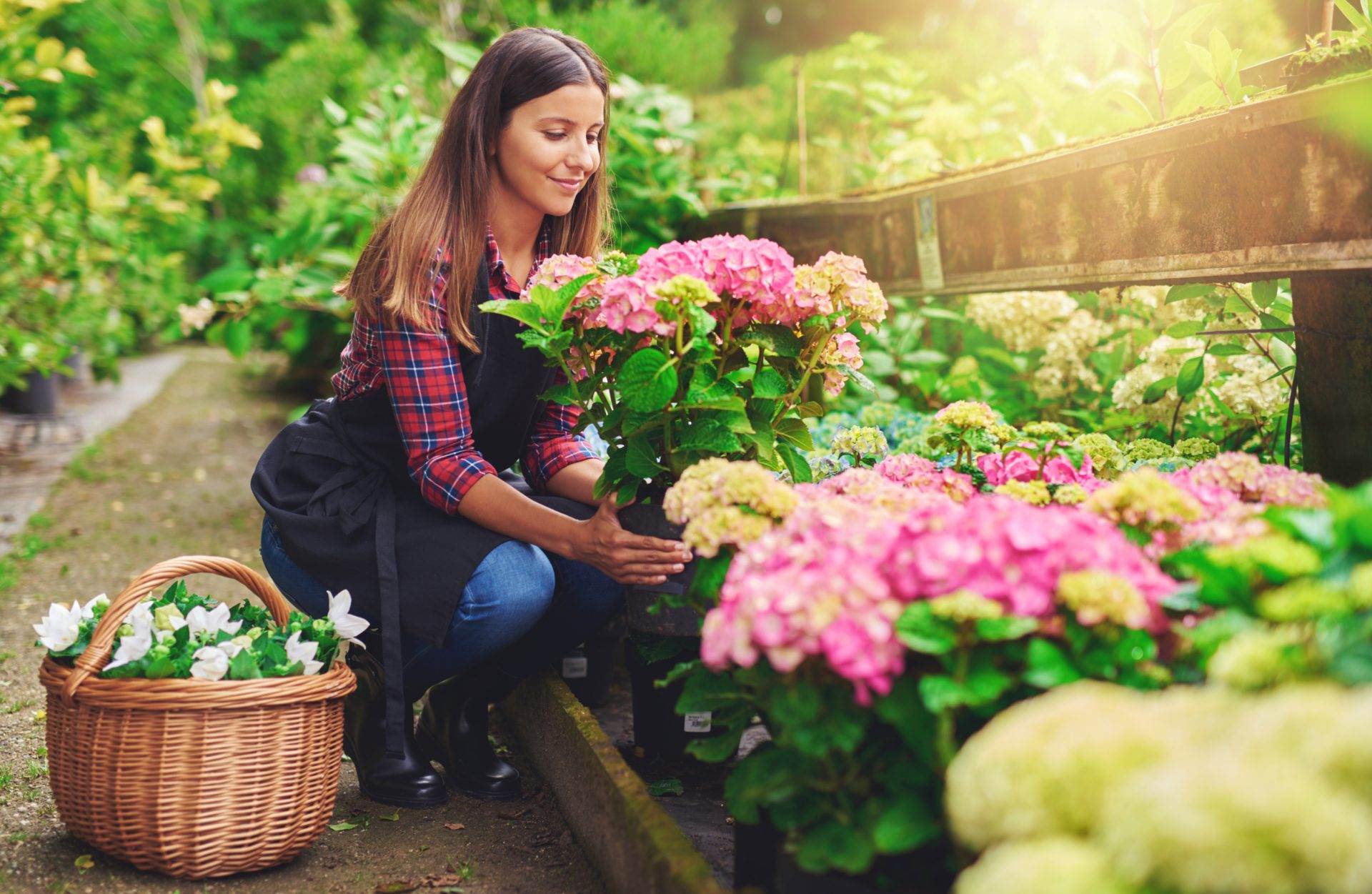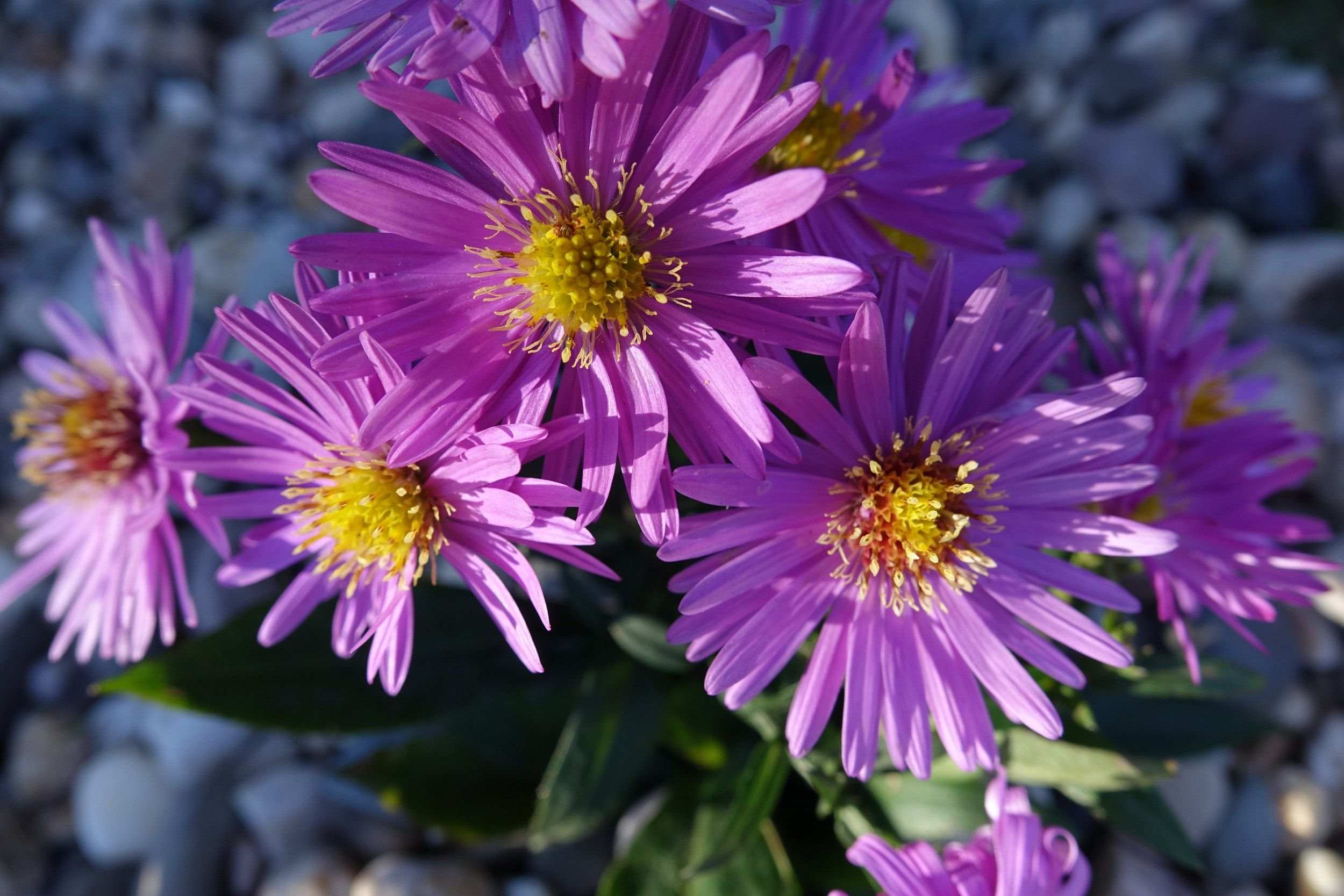Home>Types of Gardening>Ornamental Gardening>What Plants Are Perennials


Ornamental Gardening
What Plants Are Perennials
Modified: January 22, 2024
Discover the world of perennials in ornamental gardening. Learn which plants are perennials and how to incorporate them into your garden for year-round beauty.
(Many of the links in this article redirect to a specific reviewed product. Your purchase of these products through affiliate links helps to generate commission for Chicagolandgardening.com, at no extra cost. Learn more)
Table of Contents
Introduction
Welcome to the world of ornamental gardening, where beauty meets functionality. If you have a passion for creating stunning landscapes and vibrant gardens, then you’re in for a treat. In this article, we will delve into the fascinating world of perennials – the backbone of any ornamental garden.
Perennials are a diverse group of plants that come back year after year, bringing color, texture, and structure to your outdoor space. Unlike annuals that complete their life cycle in one season, perennials have the ability to survive the winter and regrow from the same root system. This enduring characteristic makes them highly valuable for creating long-lasting and low-maintenance gardens.
Whether you’re a novice gardener or a seasoned green thumb, understanding perennials and their unique qualities is essential for planning and designing a successful garden. In the following sections, we will explore the definition of perennials, their characteristics, popular types, and the countless benefits of growing them in your garden.
Definition of Perennials
Before we dive into the world of perennials, let’s start with a clear definition. Perennials are plants that live for more than two years, flowering and producing seeds multiple times throughout their lifespan. Unlike annuals, which complete their life cycle within one growing season, perennials have the ability to survive winter dormancy and regrow the following spring.
The term “perennial” is derived from the Latin word “perennis,” meaning “lasting throughout the year.” This aptly describes the enduring nature of these plants, which continue to thrive and bring beauty to gardens year after year.
Perennials come in a wide variety of shapes, sizes, and colors, ranging from delicate flowers to bold foliage. They can be herbaceous, woody, or a combination of both. Herbaceous perennials die back to the ground during the dormant season, while woody perennials maintain their structure and foliage throughout the year.
One of the distinguishing features of perennials is their ability to spread and form clumps or colonies over time. This ability to propagate allows them to fill in spaces in your garden and create a more lush and natural appearance. It is important to note that not all perennials are vigorous spreaders; some remain more contained and are well-suited for smaller garden spaces.
Perennials are known for their long lifespan and can continue to thrive for several years, provided they are cared for properly. This extended lifespan makes them a valuable investment for gardeners, as they offer sustained beauty and enjoyment in the landscape.
Now that we have a solid understanding of what perennials are, let’s explore their characteristics and what sets them apart from other types of plants.
Characteristics of Perennials
Perennials possess a unique set of characteristics that set them apart from other types of plants. These attributes contribute to their longevity, adaptability, and overall appeal in the garden. Let’s take a closer look at the key characteristics of perennials:
1. Longevity: Perennials have the remarkable ability to live for many years, with some perennials lasting for decades. This longevity makes them a sustainable and reliable choice for gardeners looking to establish a lasting landscape.
2. Survival through Seasons: Unlike annuals or biennials that complete their life cycle within one or two years, perennials have the capacity to survive through multiple seasons. They withstand harsh weather conditions and go dormant during the winter only to reemerge with vigor in the following growing season.
3. Varied Growth Forms: Perennials display a wide range of growth forms, from low-growing groundcovers to tall, graceful flowers. This diversity allows for endless creative possibilities in garden design, providing opportunities for layering, creating focal points, and adding contrasting textures.
4. Recurring Blooms: Many perennial plants exhibit the remarkable ability to bloom year after year. While the exact flowering time and duration may differ depending on the species, the recurrent blooms contribute to the overall beauty and interest of the garden throughout the seasons.
5. Increased Hardy Zones: Perennials vary in their tolerance to different hardiness zones, with some adapted to withstand extreme cold or heat. This range of adaptability allows gardeners from different regions to enjoy the beauty of perennials in their landscapes.
6. Naturalize and Multiply: Perennials have the natural capacity to propagate and multiply over time. They can spread through rhizomes, stolons, or by self-seeding. This characteristic adds a dynamic element to the garden, as perennials can fill in gaps, provide groundcover, and create a more natural-looking landscape.
7. Low Maintenance: Once established, perennials often require less maintenance compared to other types of plants. They have deep root systems that help them access moisture and nutrients from the soil, reducing the need for frequent watering and fertilization.
These characteristics make perennials a desirable choice for any garden. In the next section, we will explore some of the most popular types of perennials commonly found in ornamental gardens.
Common Types of Perennials
Perennials offer a vast array of options to suit every gardener’s taste and preference. From colorful blooms to stunning foliage, there is a perennial for every garden style and design. Here are some of the most common types of perennials:
1. Flowering Perennials: These perennials are renowned for their beautiful and vibrant blooms. Examples include roses, peonies, lilies, irises, and daylilies. Flowering perennials bring bursts of color to the garden, creating a visually stunning display.
2. Grasses: Ornamental grasses are versatile perennials that add texture, movement, and architectural interest to the landscape. Some popular grasses include fountain grass, maiden grass, switchgrass, and pampas grass.
3. Groundcovers: Groundcover perennials are low-growing plants that spread over the ground, providing a dense carpet-like effect. They help to suppress weeds and reduce soil erosion. Examples of groundcovers include creeping phlox, creeping thyme, ajuga, and sedum.
4. Herbs: Many herbs are perennials, making them a practical and flavorful addition to any garden. Some common perennial herbs include lavender, sage, thyme, rosemary, and mint. These culinary and medicinal plants not only enhance the garden but also offer practical uses in the kitchen and home.
5. Evergreen Perennials: Evergreen perennials maintain their foliage year-round, providing color and structure to the garden even during the winter months. Examples include hellebores, heucheras, yuccas, and certain varieties of ferns.
6. Native Perennials: Native perennials are plants that naturally occur in a specific region. They are well-adapted to the local climate and require less maintenance than non-native species. Native perennials attract local wildlife, support ecological diversity, and contribute to the overall health of the ecosystem.
7. Foliage Perennials: These perennials are valued for their attractive foliage, which comes in a variety of textures, shapes, and colors. Hostas, ferns, Japanese maples, and coral bells are popular examples of foliage perennials that create visual interest even without showy flowers.
These are just a few examples of the countless options available in the world of perennials. When choosing perennials for your garden, consider factors such as sunlight requirements, soil conditions, and bloom times to create a harmonious and visually captivating landscape.
Benefits of Growing Perennials
Choosing to incorporate perennials into your garden brings forth a myriad of benefits that go beyond their aesthetic appeal. Let’s explore some of the advantages of growing perennials:
1. Longevity and Value: Perennials are a long-term investment in your garden. Once established, they continue to thrive and bring beauty year after year, providing excellent value for your time and investment.
2. Low Maintenance: Compared to annuals, perennials generally require less maintenance. Once they have settled into the garden and established their root system, they often need minimal watering, pruning, and fertilizing.
3. Cost Savings: By choosing perennials, you can reduce the need for frequent plant replacements. Unlike annuals that need to be replaced every year, perennials can continue to grow and bloom for several seasons, saving you money in the long run.
4. Continuous Blooms: With a carefully selected combination of perennials, you can enjoy a continuous display of blooms throughout the growing season. This provides a consistent source of color and beauty in your garden.
5. Support for Pollinators: Perennials are often rich sources of nectar and pollen, attracting important pollinators like bees, butterflies, and hummingbirds. By growing perennials, you can create a pollinator-friendly environment and contribute to the well-being of these essential creatures.
6. Diversity and Variety: Perennials offer a wide range of options in terms of height, color, texture, and bloom time. This diversity allows you to create a garden that reflects your personal style and preferences, creating a unique and visually captivating outdoor space.
7. Efficient Use of Space: Perennials can be used strategically to fill in gaps, add structure, and create visual interest in your garden. With their ability to naturalize and spread over time, they can efficiently maximize the use of available space in your landscape.
8. Environmental Benefits: Perennials contribute to a healthier environment by reducing soil erosion, improving air quality, and providing habitat for beneficial insects and wildlife. They also require fewer resources, such as water and fertilizer, compared to annual plants.
9. Drought Tolerance: Many perennials are well-adapted to withstand periods of drought, making them an excellent choice for water-wise gardens. Once established, they have deep root systems that enable them to access water from deeper soil layers.
These benefits make perennials an attractive option for gardeners of all levels of expertise. By incorporating perennials into your landscape, you can create a beautiful and sustainable garden that brings joy year after year.
How to Care for Perennials
Caring for perennials is relatively simple, and with a little attention, these plants can thrive and bring beauty to your garden for years to come. Here are some essential care tips:
1. Watering: Proper watering is crucial for perennials. When newly planted, they need regular watering to establish their root system. Once established, water deeply and infrequently, allowing the soil to dry out between waterings. Avoid overwatering, as it can lead to root rot.
2. Mulching: Apply a layer of organic mulch around the base of your perennials to help conserve moisture, suppress weeds, and regulate soil temperature. Mulching also adds organic matter to the soil as it breaks down over time.
3. Feeding: Perennials benefit from regular feeding to support their growth and flowering. Apply a balanced, slow-release fertilizer in early spring or use organic options such as compost or well-rotted manure.
4. Pruning: Pruning requirements vary depending on the type of perennial. Remove any dead or damaged foliage throughout the growing season. Prune back the plants in early spring to encourage new growth and maintain a neat appearance.
5. Dividing: Some perennials benefit from division every few years. This involves lifting the plant and splitting it into smaller sections, then replanting them. Division helps rejuvenate the plant, promote healthier growth, and control its spread.
6. Staking: Tall or floppy perennials may require staking to provide support and prevent them from bending or breaking under their own weight. Use stakes or plant supports to keep them upright and maintain an attractive appearance.
7. Deadheading: Removing spent flowers, a process called deadheading, promotes continuous blooming and prevents the plant from setting seeds. This redirects the plant’s energy towards producing more blooms and keeps the overall appearance tidy.
8. Pest and Disease Control: Monitor your perennials for common pests like aphids, snails, and slugs. Deal with infestations promptly using organic pest control methods or insecticidal soap. Provide good air circulation and avoid overwatering to prevent diseases such as powdery mildew.
9. Winter Protection: In colder regions, provide winter protection for your perennials by adding a layer of mulch around the base to insulate the roots. Consider using frost blankets or covers for more delicate perennials to shield them from extreme cold.
By following these care tips, you can ensure that your perennials remain healthy, vibrant, and continue to enhance your garden year after year.
Choosing the Right Perennials for Your Garden
When selecting perennials for your garden, it’s essential to consider a few key factors to ensure a successful and visually appealing landscape. Here are some tips to help you choose the right perennials:
1. Climate and Hardiness: Start by considering your climate and hardiness zone. Choose perennials that are adapted to thrive in your specific region. Consult local gardening resources or ask experts at a nearby nursery to help you identify suitable plants.
2. Sunlight Requirements: Assess the sunlight conditions in your garden, paying attention to the duration and intensity of sunlight throughout the day. Some perennials thrive in full sun, while others prefer partial shade or full shade. Select plants that are compatible with your garden’s sunlight levels.
3. Soil Conditions: Consider the soil type in your garden, including its drainage capabilities and pH level. Some perennials thrive in well-draining soil, while others prefer moist or acidic soil. Understanding your soil conditions will help you choose plants that will thrive in your garden.
4. Bloom Time: Plan your garden to include perennials with staggered bloom times to ensure continuous color throughout the growing season. Consider early spring bloomers, midsummer showstoppers, and fall-flowering perennials to add interest and variety to your garden.
5. Height and Size: Take into account the mature height and spread of perennials. Consider their growth habits and ensure they align with your garden’s design and space constraints. Tall perennials can serve as striking focal points, while low-growing varieties work well as borders or groundcovers.
6. Complementary Colors and Textures: Create a visually balanced and harmonious garden by selecting perennials with complementary colors and textures. Consider how different blooms and foliage will mix and match, creating interesting and cohesive combinations.
7. Longevity and Maintenance: Assess the longevity and maintenance requirements of potential perennials. Some may require dividing or deadheading, while others are low-maintenance and self-sufficient. Consider your available time and resources for ongoing care and choose varieties that align with your preferences.
8. Personal Preferences: Ultimately, choose perennials that resonate with your personal preferences and gardening style. Select plants that bring you joy, whether it’s through their vibrant blooms, unique foliage, or fragrance. Your garden should be a reflection of your personality and tastes.
By considering these factors, you can create a well-planned, visually appealing, and sustainable garden that will bring you years of enjoyment. Don’t be afraid to experiment, mix and match, and let your creativity shine as you select perennials for your garden.
Frequently Asked Questions about Perennials
Perennials are popular plants in the world of gardening, and it’s natural to have questions about their care, maintenance, and characteristics. Here are some frequently asked questions about perennials:
- What is the difference between perennials and annuals?
- How often should I water my perennial plants?
- Do all perennials bloom every year?
- How do I care for perennials during the winter?
- Do perennials require fertilizer?
- How do I control pests and diseases in my perennial garden?
- Can I divide my perennials?
- Can perennials be grown in containers?
Perennials are plants that live for multiple years and regrow from the same root system, while annuals complete their life cycle within one growing season and need to be replanted each year.
Watering needs can vary depending on the specific plant and local climate. Generally, new plantings require regular watering until established. Once established, water deeply and infrequently, allowing the soil to dry out between waterings.
While many perennials do bloom annually, the exact blooming time and duration can vary across different species. It’s essential to choose a mix of perennials with staggered bloom times to ensure continuous color and interest in your garden.
Winter care for perennials can vary depending on your climate and the specific plants. Adding a layer of mulch around the base of the plants can help insulate the roots. More delicate perennials may require additional protection with frost blankets or covers.
Perennials benefit from regular feeding to support their growth and blooming. Apply a balanced, slow-release fertilizer in early spring or use organic options such as compost or well-rotted manure.
Monitoring your plants regularly is key to managing pests and diseases. Use organic pest control methods or insecticidal soap to deal with infestations promptly. Promote good air circulation and avoid overwatering to prevent diseases like powdery mildew.
Many perennials benefit from division every few years to maintain their vigor and control their spread. Dividing involves lifting the plant, splitting it into smaller sections, and replanting them.
Yes, many perennials can be successfully grown in containers. Make sure to choose appropriate container sizes, provide adequate drainage, and use a high-quality potting mix. Monitor watering needs carefully, as container-grown plants can dry out more quickly.
These are just a few common questions about perennials. Remember, each plant may have specific care requirements, so it’s always beneficial to research and consult reliable gardening resources or professionals for more information.
Conclusion
Perennials are the backbone of any beautiful and thriving ornamental garden. With their ability to return year after year, they bring enduring beauty, color, and structure to outdoor spaces. Whether you’re a seasoned gardener or just starting out, incorporating perennials into your garden is a rewarding and enjoyable experience.
We explored the definition of perennials and learned about their unique characteristics, such as their longevity, recurring blooms, and varied growth forms. We also discussed common types of perennials, from flowering varieties to grasses and groundcovers, highlighting their versatility and the endless possibilities they offer in garden design.
Growing perennials comes with a host of benefits, including cost savings, low maintenance requirements, and their role in supporting pollinators and environmental health. We discussed essential care tips, such as proper watering, mulching, and feeding, to ensure the health and longevity of your perennials.
Choosing the right perennials for your garden involves considering factors such as climate suitability, sunlight requirements, and bloom time. By selecting plants that align with your preferences and garden conditions, you can create a visually stunning and sustainable landscape that brings joy year after year.
We also addressed common questions about perennials, covering topics such as watering, winter care, pest control, and division. It’s important to stay informed and consult reliable gardening resources to ensure the success of your perennial garden.
So, whether you’re looking to add bursts of color, create a serene oasis, or attract beneficial wildlife, perennials are the perfect choice. With their enduring beauty and long-term value, these plants have the ability to transform any outdoor space into a breathtaking sanctuary.
Embrace the world of perennials, unleash your creativity, and watch as your garden flourishes with beauty and life, year after year. Happy gardening!
